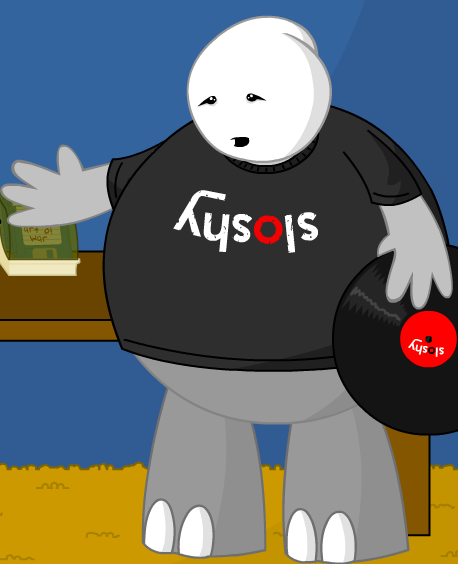I’ve always been curious as to what “normal” people think programming is like. The wildest theory I’ve heard is “typing ones and zeroes” (I’m a software engineer)
8 hours of meetings and 10 minutes of writing code.
Nailed it!
That sounds ridiculous. It 2024, I’m pretty sure programmers just use voice input and say the ones and zeros instead of sitting there and doing all that typing. Still not sure why they have to wear black hoodies though.
The guys in the hoods are cybersecurity devs
It involves a lot of tall girls in thigh high socks, sometimes they wear cat ears too. And they do a lot of typing on extra clackity keyboards.
I got news for you buddy…
Don’t be a bigot. Tall girls are awesome.
*(Also in case you weren’t being a bigot and were instead referring to what it’s really like to work in tech: I do know industry isn’t entierly cat girls in coding socks but most of the computers for career people I’ve known have been, so I choose to believe.)
I need to get back in the industry. Oh, for an extra clack keyboard.
I’m pretty sure most of these comments are written by programmers 🤣 reciting CSI stuff…
Actual programming is punished by your boss, the IP lawyer, and the customer.
Backup backup backup. If anything breaks rollback till it works again.
Implement machine learning for the business process. You can afford you one raspberry pi.
Ctrl+C
Ctrl+V
I took programming in highschool with Turing. As far as I know that’s how every computer program works
Well, I’m not really the truly blind here, I used to do some BASIC back in the eighties. Just introductory level shit, though. I’m talking a course taken over a summer for “gifted” kids, not even an actual full on course at a serious level. And I wasn’t very good at it lol
But, I still have no clue what modern languages are like, or how they’re used professionally. I’ve always assumed, you guys are busy entering lines of code, then compiling and testing, then punching things because you have to go back and fuck
upwith the code again.I figure there may be ways to streamline the coding itself, maybe chunks of prefab that can be copy/pasted, or whatever.
Other than that, I suppose there’s lots of coffee, coke and/or meth, and a lot of waifu pillows.
Imagine this… line numbers are no longer a thing. 😆 Yeah I learned programming in the 80’s as well, the Sinclair ZX81 was my first computer. These days a large number of languages, both compiled and parsed, are based around C so it’s pretty easy to jump around a lot.
Okay, no line hikers numbers. But, how the hell are things carried out in order? Did numbering just get replaced by another system, or did it get thrown out as unnecessary to coding as a whole?
Yeah line numbers got thrown out as a whole. Code is still followed in sequential order, but instead of GOTO we now have functions that we call for reusable operations, and those functions can have parameters sent to them. So like you can set up a function that adds a line of text to a log file, then call the function with a variable containing that text. I honestly can’t remember if we had something like that in the early versions of BASIC. Overall I felt it made things a lot easier when line numbers were dropped, especially when you wanted to add more code in the middle of an existing block so you weren’t forced to renumber everything to make room.
I think the biggest change to wrap my head around was the elimination of the GOTO statement. This seemed like such a mistake at first, but it turns out that if you wrap things within conditional expressions (if-then and do-while are typical) then you really don’t need GOTO jumping all over the place and it tends to keep specific operations more self-contained which leads to the code being easier to read through.
If you want to see some examples of more modern code, take a look at something for PHP. This code felt most at home to me when I moved away from BASIC and is one of the few that still uses the $ symbol to denote variable names. Loops and conditionals are enclosed in {curly braces} so instead of the old
for i$=1 to 5:<code here>:nextloop you would see something likefor($i=1; $i<=5; $i++){<code here>}and you just add as many lines as you need in between them. This is where indenting your code became popular, because if you have a lot of nested conditionals/loops it’s easy to lose your place. The indents give you a reference of which code is part of which loops. Overall things have changed quite a bit, but at the core of it your code is still following a specific order to get things done.That is cool as hell. Thank you very much for that :)
You learn a special type of Spanish and somehow you make MS Word come out
I imagine it’s like people who talk to animals but instead of animals you have computers.
accurate description of python devs.
I’ve worked with those…, they spend their day hissing at the monitor, it’s honestly unnerving
And the animals are ants
These two phrases primarily “works as designed/expected” and “works on my machine”
Tedious af.
Waiting for code to compile and deploy is a productivity killer, but it gives me short breaks
Magic
When things get really tough, two of you will double up on the same keyboard.
1 in 6 have multiple personalities and substance abuse daemons.
Your bosses ride little skateboards everywhere, when they’re not busy programming animated singing viruses.
The FBI watches you code, but has no idea what they’re looking at.
A significant fraction of you can type with your feet, proficiently.
I figure it’s like what I used to do in grade school to make the turtle draw shapes in Logowriter, on an Apple IIe.
And you say you’re not a programmer 🙄










